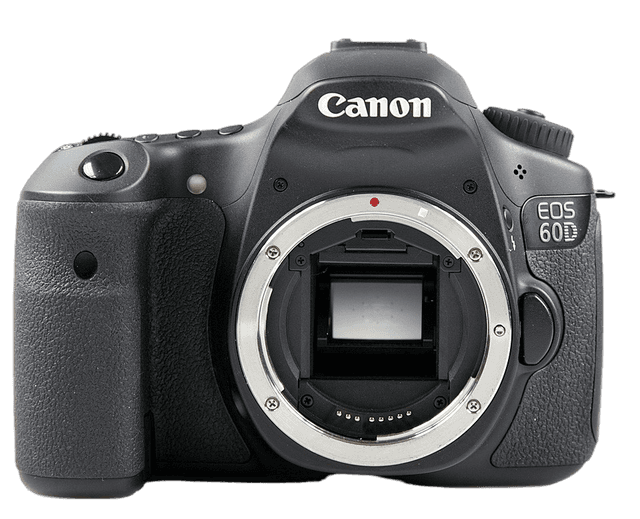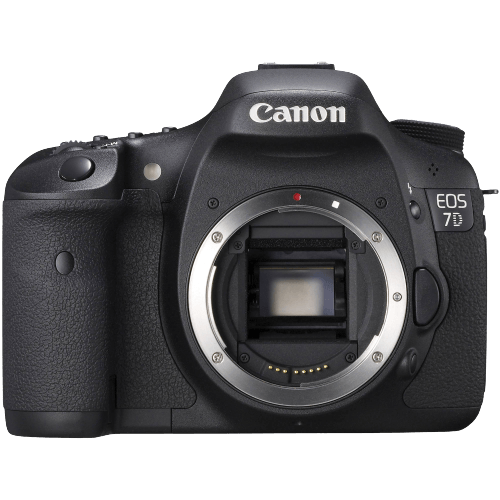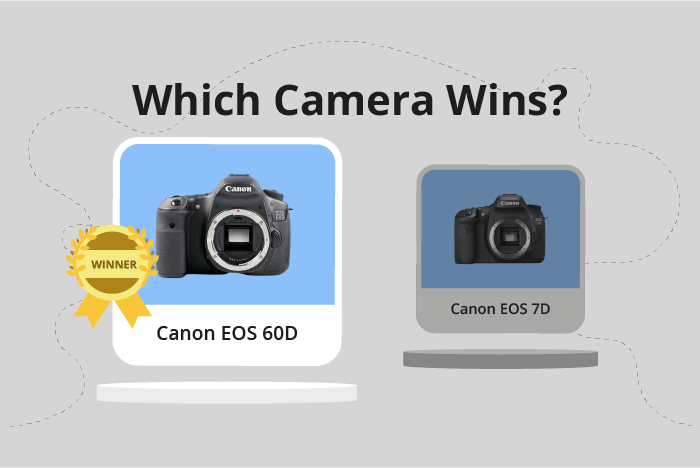Canon EOS 60D vs EOS 7D Comparison
Canon EOS 60D

Canon EOS 7D

The Canon EOS 60D outperforms the Canon EOS 7D with a score of 47/100 compared to 45/100. Both cameras are DSLRs released in 2010 and 2009, respectively, and share some common specifications. They have similar sizes, with the 60D measuring 145 x 106 x 79mm and the 7D at 148 x 111 x 74mm.
The 60D has an advantage in terms of weight, being lighter at 755g compared to the 7D’s 860g. This makes it more comfortable to carry around for extended periods. The 60D also had a lower launch price of $1199, making it more affordable than the 7D, which was priced at $1974.
On the other hand, the 7D boasts a slightly sturdier build, which may be preferable for some users. Despite the difference in scores, both cameras offer quality performance and cater to different preferences and budgets. Ultimately, the choice between the Canon EOS 60D and EOS 7D depends on individual needs and priorities.
Canon EOS 60D vs EOS 7D Overview and Optics
The Canon EOS 60D and Canon EOS 7D both score 43/100 in optics, indicating that they share similarities in this aspect. Both cameras have 18 megapixels, a CMOS sensor type, a DXOMARK score of 66 for the sensor, an APS-C sensor size, a Canon EF-S lens mount, and no image stabilization. These shared specifications contribute to their equal optics score.
However, the Canon EOS 7D has a faster shooting speed at 8 frames per second (fps), compared to the Canon EOS 60D’s 5.3 fps. This advantage allows the EOS 7D to capture fast-moving subjects more effectively, making it more suitable for action and sports photography. Additionally, the EOS 7D features a Dual Digic 4 processor, which enhances its overall performance and image processing capabilities.
On the other hand, the Canon EOS 60D does not possess any specific advantages in optics over the EOS 7D. It shares the same megapixels, sensor type, DXOMARK sensor score, sensor size, lens mount, and lack of image stabilization. The only difference is its slower shooting speed and single Digic 4 processor.
Given these comparisons, the Canon EOS 7D is the better choice for those seeking a camera with faster shooting speed and enhanced processing capabilities. However, the Canon EOS 60D remains a viable option for those who prioritize other aspects of a camera and do not require the faster shooting speed. While both cameras have the same optics score, the EOS 7D’s advantages make it a more suitable choice for specific photography needs.
Canon EOS 60D vs EOS 7D Video Performance
The Canon EOS 60D and Canon EOS 7D both have a video score of 43/100, making them equal in terms of video capabilities. They share several common specifications, including Full HD max video resolution, max video dimensions of 1920 x 1080 for the 60D and 1921 x 1080 for the 7D, and a max video frame rate of 30fps. Neither camera has built-in time-lapse functionality.
Despite having the same video score, there are some differences between the two cameras. The Canon EOS 7D has a slightly larger max video dimension of 1921 x 1080, compared to the 60D’s 1920 x 1080. This difference is minor and may not have a significant impact on video quality. However, it is a point of distinction between the two models.
On the other hand, the Canon EOS 60D does not have any notable advantages in video capabilities over the 7D. The two cameras share the same max video resolution, frame rate, and lack of built-in time-lapse functionality. This means that the 60D is not superior to the 7D in terms of video performance.
In comparing the video capabilities of the Canon EOS 60D and Canon EOS 7D, it is clear that they are evenly matched. Both cameras have the same video score and share several common specifications. The only difference is the slightly larger max video dimension of the 7D, which may not be significant enough to impact video quality. Therefore, neither camera can be considered superior to the other in terms of video performance.
Canon EOS 60D vs EOS 7D Features and Benefits
The Canon EOS 60D edges out the Canon EOS 7D with a feature score of 57/100 compared to the 7D’s 54/100. Both cameras share several common specifications, such as a 3-inch screen size, no touchscreen, no GPS, no WIFI, and no Bluetooth. However, there are key differences that make the 60D a better choice in terms of features.
The 60D has a higher screen resolution, boasting 1,040,000 dots compared to the 7D’s 920,000 dots. This higher resolution results in a clearer and sharper display, making it easier to review images and navigate menus. Additionally, the 60D has a flip screen, allowing for more versatile shooting angles and better self-portraits. The 7D lacks this feature, limiting its usability in certain situations.
On the other hand, the 7D does not have any significant advantages over the 60D in terms of features. Both cameras lack modern connectivity options, such as WIFI and Bluetooth, making them equally inconvenient for sharing images or remote camera control.
Given the higher screen resolution and the presence of a flip screen, the Canon EOS 60D proves to be the better choice when considering features alone. The Canon EOS 7D, while having a slightly lower feature score, does not offer any notable advantages over the 60D. Therefore, the 60D stands as the preferred option for those prioritizing camera features in their decision-making process.
Canon EOS 60D vs EOS 7D Storage and Battery
The Canon EOS 60D outperforms the Canon EOS 7D in storage and battery, scoring 45/100 compared to the 7D’s 35/100. Both cameras have one memory card slot and do not support USB charging. Additionally, they utilize the same battery type, the LP-E6.
The 60D has an advantage in battery life, providing 1100 shots per charge, while the 7D only offers 800 shots. This makes the 60D a better choice for extended shooting sessions. The 60D also accepts more versatile memory cards, such as SD, SDHC, and SDXC, which are widely available and typically more affordable.
On the other hand, the 7D uses Compact Flash (Type I or II), UDMA, and Microdrive memory cards. These cards can provide faster write speeds and larger storage capacities, making them suitable for professional applications.
Taking these factors into account, the Canon EOS 60D proves to be a more practical option for casual and amateur photographers due to its longer battery life and versatile storage options. However, the Canon EOS 7D may still be a viable choice for professionals who prioritize write speeds and storage capacity over battery life.
Alternatives to the Canon EOS 60D and EOS 7D
Are you still undecided about which camera is right for you? Have a look at these popular comparisons that feature the Canon EOS 60D or the Canon EOS 7D:

